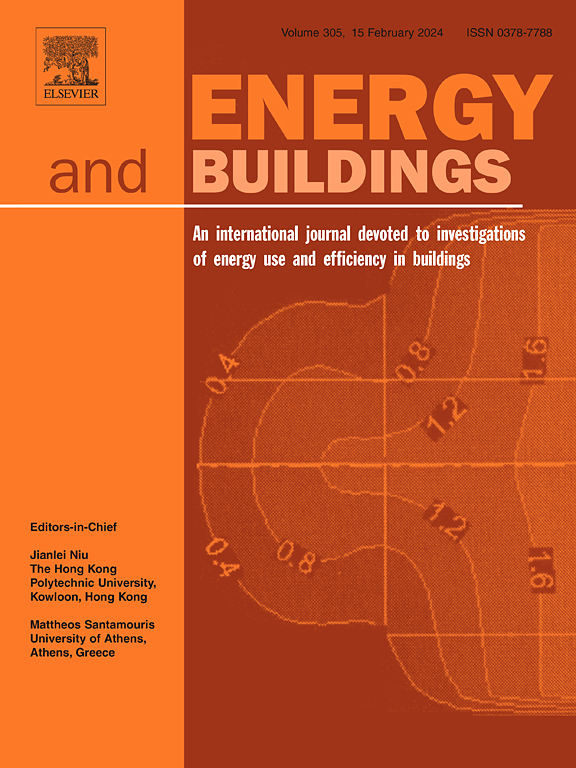Enhancing indoor light and thermal performance with micro-prismatic materials for complex fenestration systems: A review
IF 6.6
2区 工程技术
Q1 CONSTRUCTION & BUILDING TECHNOLOGY
引用次数: 0
Abstract
Creating high performance buildings is crucial not only for energy conservation but also for enhancing indoor comfort and well-being of occupants. Complex Fenestration Systems (CFS) can modulate daylight and/or solar radiation, thereby improving the quality of indoor light and thermal environments. This paper provided a comprehensive review of the application of micro-prismatic materials (MiPMs) in CFS, analyzing and summarizing the design, manufacturing, evaluation methods, case studies, and implementation framework of MiPMs. The effectiveness of MiPMs in enhancing indoor light and thermal performance was analyzed and the limitations and future research directions of these materials were discussed. The review suggested that using mathematical models and algorithms to design the prismatic structure parameters could be an efficient approach. Integrating other materials or technologies and incorporating dynamic control could significantly further enhance the optimized performance of MiPMs. Ultra-precision machining is the core manufacturing technology for MiPMs, and the use of recycled materials may offer a more sustainable approach for material production. Through characterization via bidirectional scattering distribution functions (BSDF) and the ability to generate the data using goniophotometers or simulation tools, computer simulation can act as a time-efficient, and accurate method for performance evaluation of MiPMs. A summarized roadmap may help building owners and architects more effectively apply MiPMs in their projects. Future work might focus on enhancing product quality and weather resistance, standardizing test and simulation work, developing accurate and integrated analysis methods, and exploring integration of MiPMs with building integrated photovoltaic (BIPV) systems.
使用微棱镜材料提高复杂幕墙系统的室内光热性能:综述
创建高性能建筑不仅对节约能源至关重要,而且对提高室内舒适度和居住者的幸福感也至关重要。复合幕墙系统(CFS)可以调节日光和/或太阳辐射,从而改善室内光和热环境质量。本文全面综述了微棱镜材料(MiPM)在复合幕墙系统中的应用,分析并总结了微棱镜材料的设计、制造、评估方法、案例研究和实施框架。分析了微棱镜材料在提高室内光和热性能方面的有效性,并讨论了这些材料的局限性和未来研究方向。综述表明,使用数学模型和算法设计棱柱结构参数可能是一种有效的方法。整合其他材料或技术并结合动态控制可进一步显著提高 MiPM 的优化性能。超精密加工是 MiPMs 的核心制造技术,而使用回收材料可能会为材料生产提供一种更具可持续性的方法。通过双向散射分布函数 (BSDF) 进行表征,并使用测角光度计或模拟工具生成数据,计算机模拟可以作为一种省时、准确的 MiPM 性能评估方法。总结出的路线图可以帮助建筑业主和建筑师更有效地在项目中应用 MiPM。未来的工作重点可能是提高产品质量和耐候性,规范测试和模拟工作,开发精确的综合分析方法,以及探索 MiPM 与光伏建筑一体化 (BIPV) 系统的整合。
本文章由计算机程序翻译,如有差异,请以英文原文为准。
求助全文
约1分钟内获得全文
求助全文
来源期刊

Energy and Buildings
工程技术-工程:土木
CiteScore
12.70
自引率
11.90%
发文量
863
审稿时长
38 days
期刊介绍:
An international journal devoted to investigations of energy use and efficiency in buildings
Energy and Buildings is an international journal publishing articles with explicit links to energy use in buildings. The aim is to present new research results, and new proven practice aimed at reducing the energy needs of a building and improving indoor environment quality.
 求助内容:
求助内容: 应助结果提醒方式:
应助结果提醒方式:


